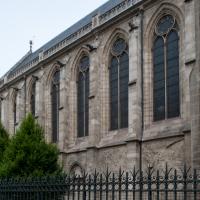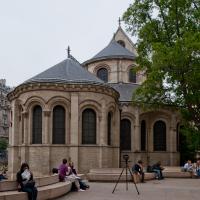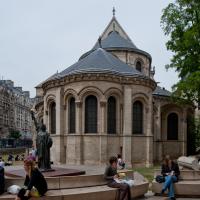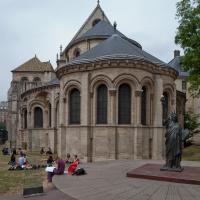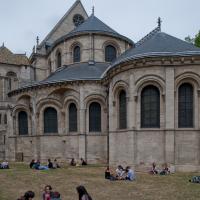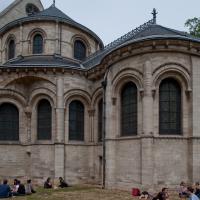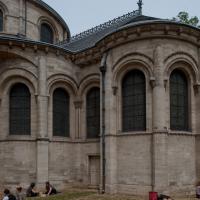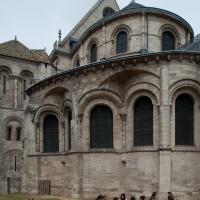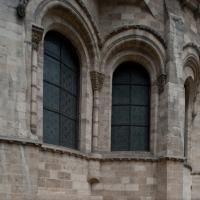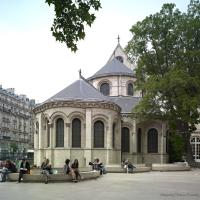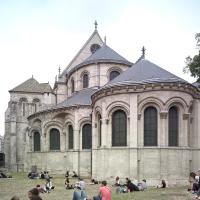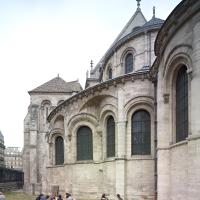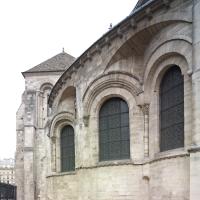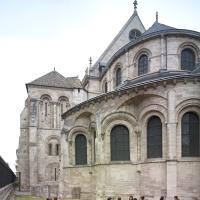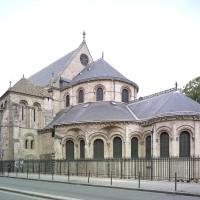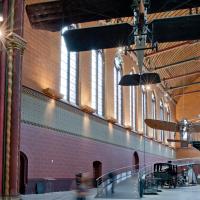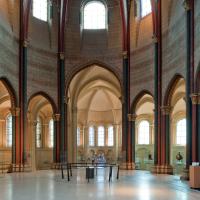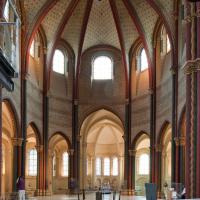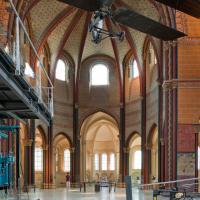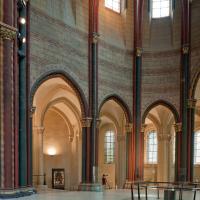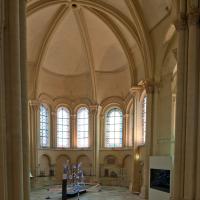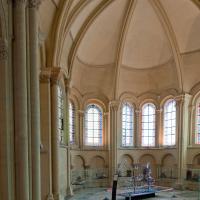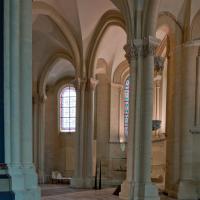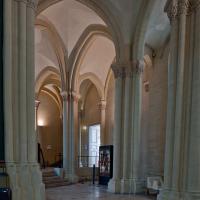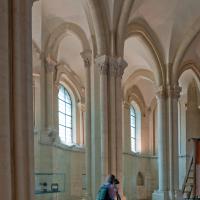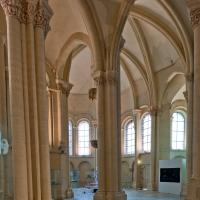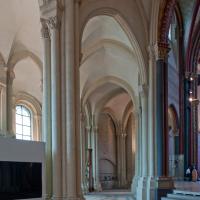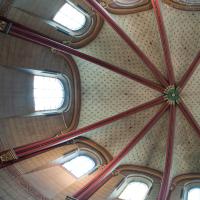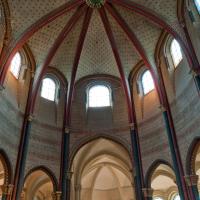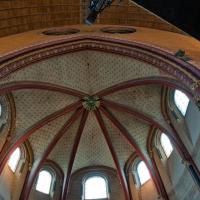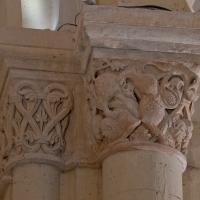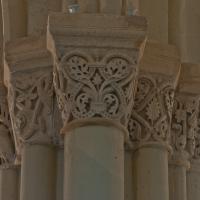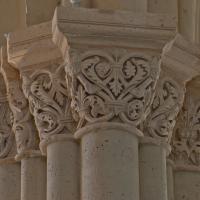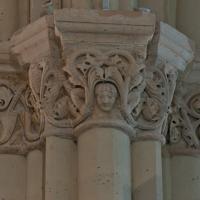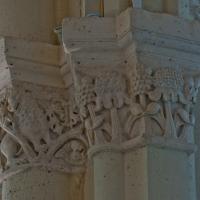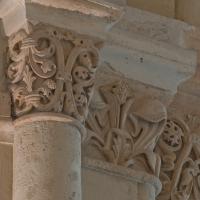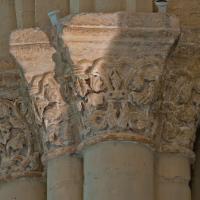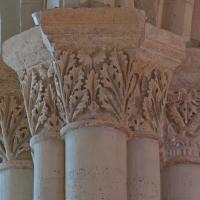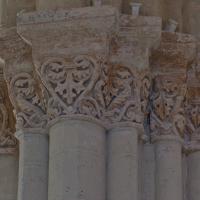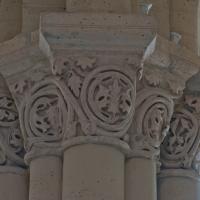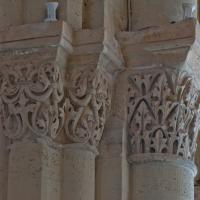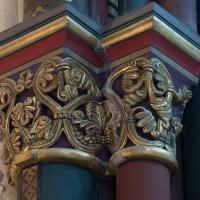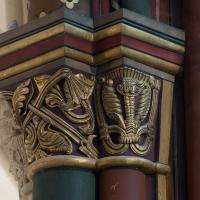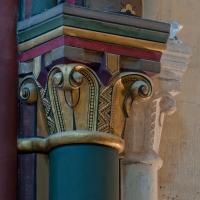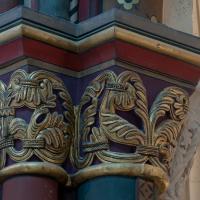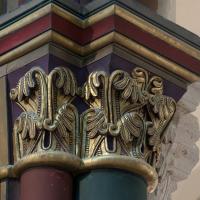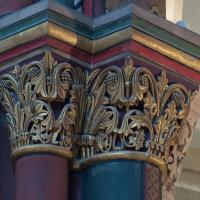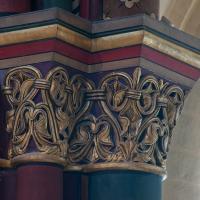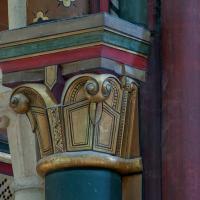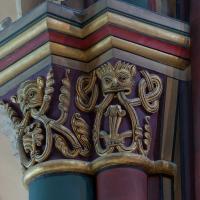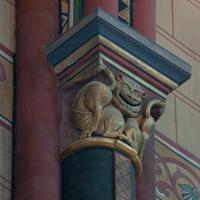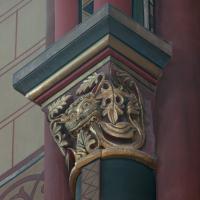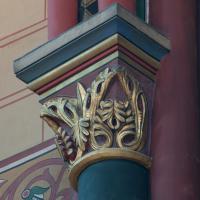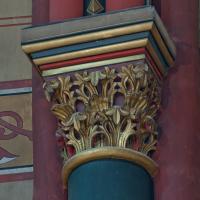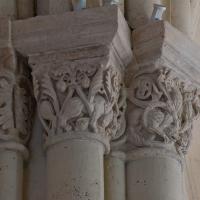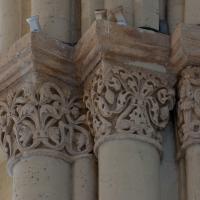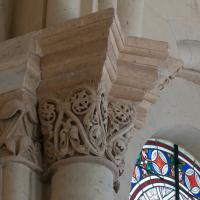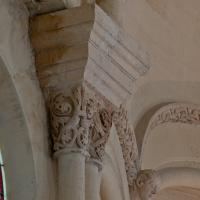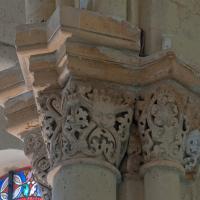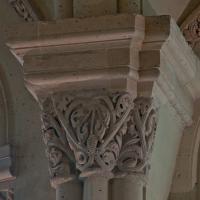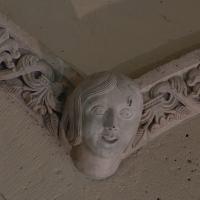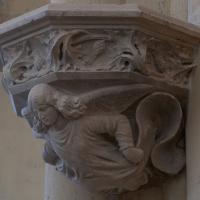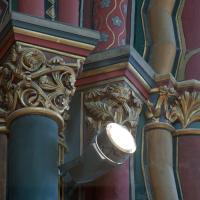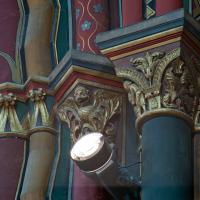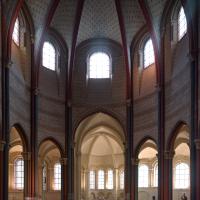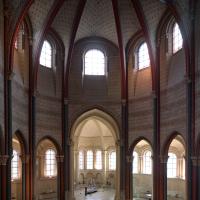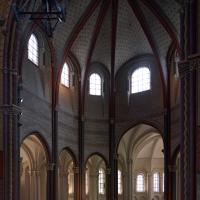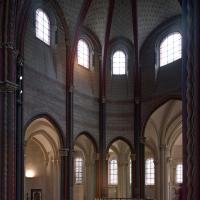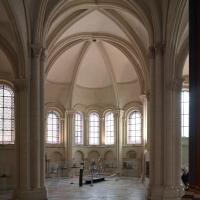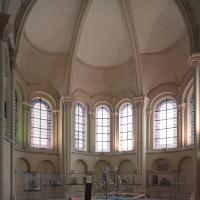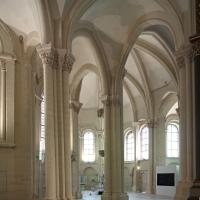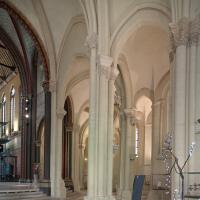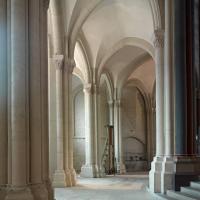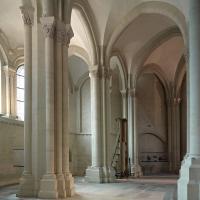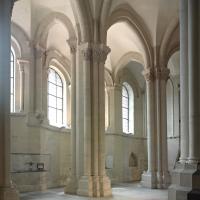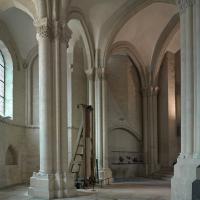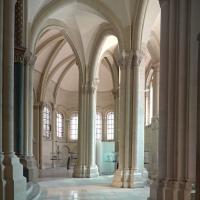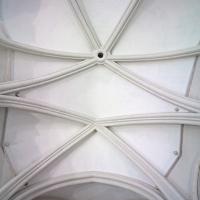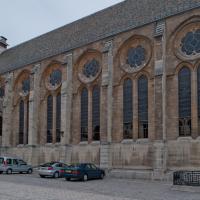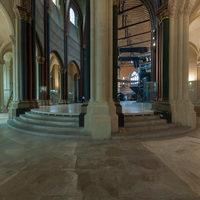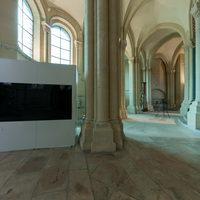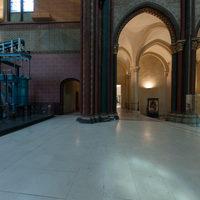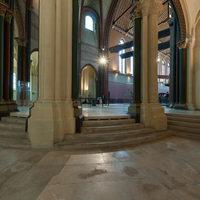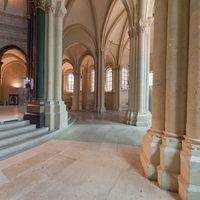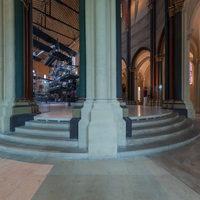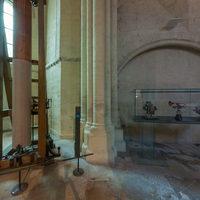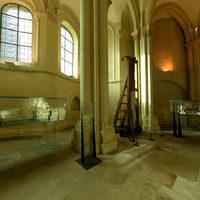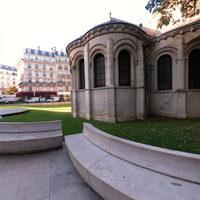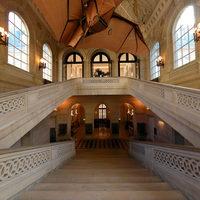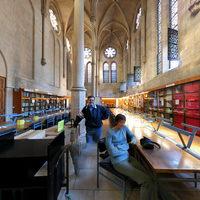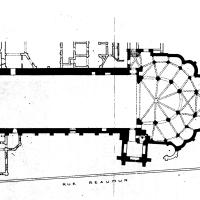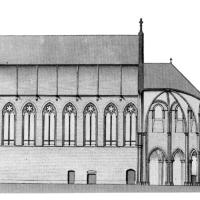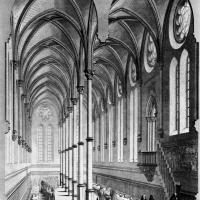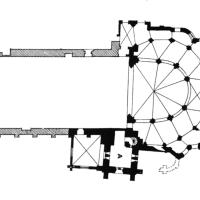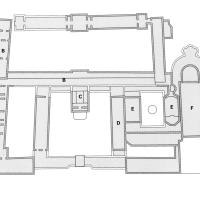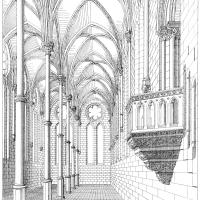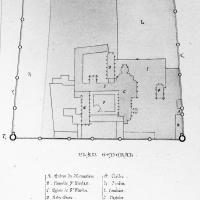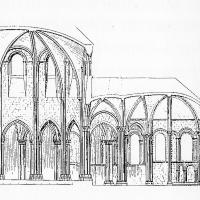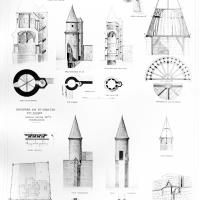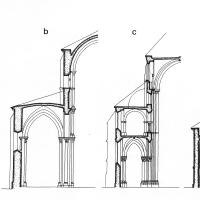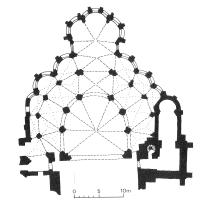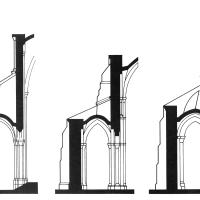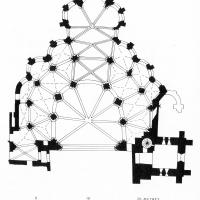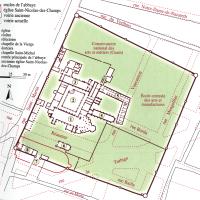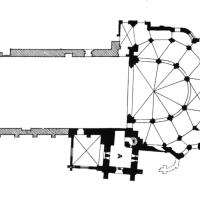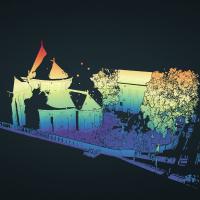Images
VR Tour
Notes
History
Excavations have revealed the presence of numerous Merovingian sarcophagi of a type datable to the late-6th-early-7th centuries; a church on this site is mentioned in a 710 charter of Childebert II and foundations of the apse of the Merovingian church have been discovered under the present choir. Destroyed or badly damaged by the Vikings (885-886) the church was re-founded by King Henry I in 1059-1060 as a chapter of secular canons. The church was consecrated on May 29 in 1067 in the presence of King Henry's son, Philip I who gave the house (in 1079) to the monastery of Cluny (then led by Hugues de Semur), of which it became a priory. We can thus date the construction of the Romanesque church to -1067. It seems that the single-vessel Romaneque nave, 16m wide and 43m long, had a wooden roof and was divided into two almost equal spaces by a screen. To the west was a central tower (collapsed in 1454). The choir was formed of an apse some 13m wide and 13m deep. A tower with eastern apsidal chapel (opening to the choir) was added on the south side of the choir after the transfer of the house to Cluny: the lower two stories survive but upper parts of the tower were demolished in 1808. S-Martin-des-Champs then became one of the principal houses of the Cluniac order, critical for relations with the Ile-de-France and England and mother church of (by 1109) 17 dependent priories. There are is no textual evidence for the work of reconstruction on the choir: most historians have placed it in the decade 1130-40 during the period of priors Eudes I (1126-31), Mathieu II (1131-20 and Thibaud II (1132-43) at a time the priory enjoyed the generosity of the kings of England as well as France. Soon before his death in 1137 Louis VI established the celebration of his anniversary in the priory. In 1121 Henry I of England established a similar memorial celebration. The nave of the church was rebuilt circa 1230 upon the lower walls of the old nave. Nearly all the monastic buildings were replaced between 1702 and 1720. On the suppression of the priory in 1790 the priory buildingss were distributed to the mairie of the VI. Arrondissement and to the Conservatoire des Arts et Metiers which transformed the church into a museum. Extensive restoration and rebuilding was undertaken by Vaudoyer c1850 and Deneux, 1913-16. Excavations undertaken that this time revealed the southern apsical chapel of the older church
Date
Begun ca. 1140
Plan
A vast single-vessel nave with wooden roof; no transept, stubby choir with one straight bay linked with a five-segment hemicycle creating the impression of half of a rotunda. The existing hemicycle sits directly atop the foundations of the older Romanesque apse. A tower (from the early 12th century) flanks the choir. Double ambulatory, the outer one (pinched especially on the north side owing to restrictions imposed by the site), opening into a crown of shallow radiating chapels with a much larger axial chapel in the form of a trilobe. The undulating outer wall of the ambulatory is pulled into a single sweep by corbelled arches over the chapel windows. The axial bay of the hemicycle, taller than the others, opens widely into the sumptuous trilobed axial Virgin Chapel.
Elevation
Single-story nave with no vertical articulation; large traceried windows and an open wooden barrel vault. Two-story choir: pointed arches of the thin-walled arcade supported on multi-colonnette compound piers of multiple shapes, flat, unarticulated upper wall punched through with large clerestory windows. Rib vaults in the main vessel and axial chapel; interspersed groin vaults elsewhere. The upper walls of the main vessel are quite thin and the vault is somewhat domed up; there are deep lateral buttresses (some of them reworked by Vaudoyer) sitting atop the transverse arches of the choir aisles and ambulatory.
Significance
The reconstruction of the chevet of S-Martin-des-Champs, pre-dating the work at S-Denis, provides a rare glimpse of the role of monastic architecture in what has been called the Parisian "building boom" (Stephen Gardner) of the twelfth century. The builders of this chevet, disregarding the Cluniac model (single ambulatory and five separate chapels), have created an extraordinary space that marks the dawn of the Gothic age. The rounded forms of the englarged axial chapel have (Plagnieux) been associated with the cult of the Virgin Mary (Notre Dame de la Carole) practiced there: the cult statue of the enthroned Virgin and Child (sedes sapientiae) is conserved in the church of S-Denis.
Location
Bibliography
Ache, J., "Le prieuré royal de Saint-Martin des Champs, ses rapports avec l'Angleterre et les débuts de l'architecture gothique," Centre international d'études romanes, Bulletin, I, 1963, 8ff.
Berthier-Georgesco, Cathérine, "Le prieuré de Saint-Martin-des-Champs à Paris, étude historique et archéologique," Positions de thèses de l'Ecole nationale des chartes, 1972, 15
Depoin, J., Recueil des chartes et documents de S. Martin des Champs, abbaye parisienne, I, Paris, 1912
Lefèvre-Pontalis, E. E., "Eglise de Saint-Martin des Champs à Paris," Cong arch., LXXII, 1919, 106-126
Lombard Jourdan, Anne, "L'invention du "roi fondateur" à Paris au XII siècle: de lobligation morale au thème sculptural," Bibliothèque de l'Ecole des Chartes, 155, 2, 1997, 485
Plagnieux, P., "Le cloître du XIIIe siècle de l'ancien prieuré de Saint-Martin-des-Champs, Cahiers archéologiques, 45, 1997, 89.
-----,"Le chevet de Saint-Martin-des-Champs à Pris: l'incunable de l'architecture gothique et temple de l'oraison cludisienne," Bulletin monumental, 167, 2009, 3-39
Sohn, Andreas, "Die Kapetinger und das Pariser Priorat Saint-Martin-des-Champs im 11 und 12 Jahrhundert,' Francia, Forschungen zur westeuropäischen Geschichte, 25, 1999, 77


